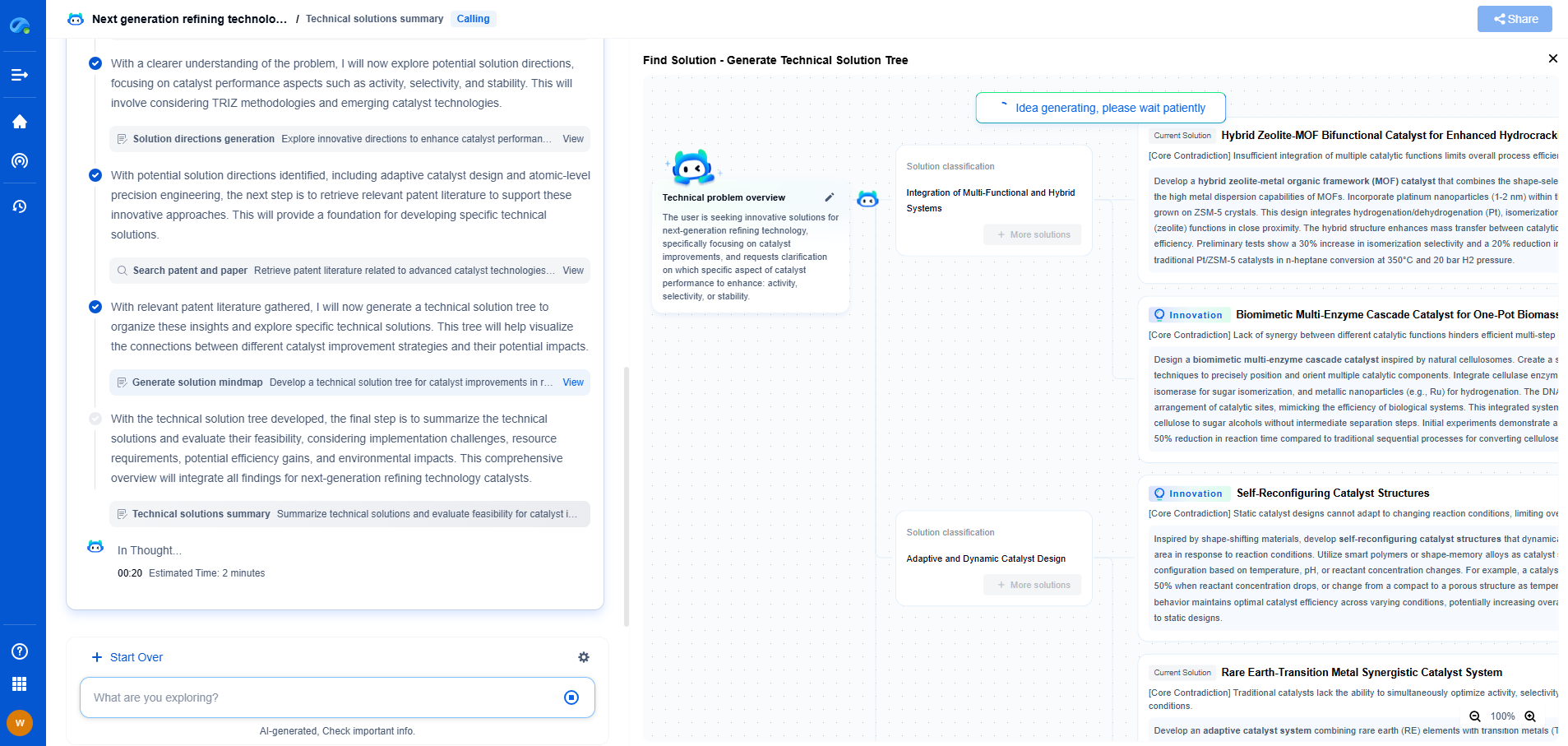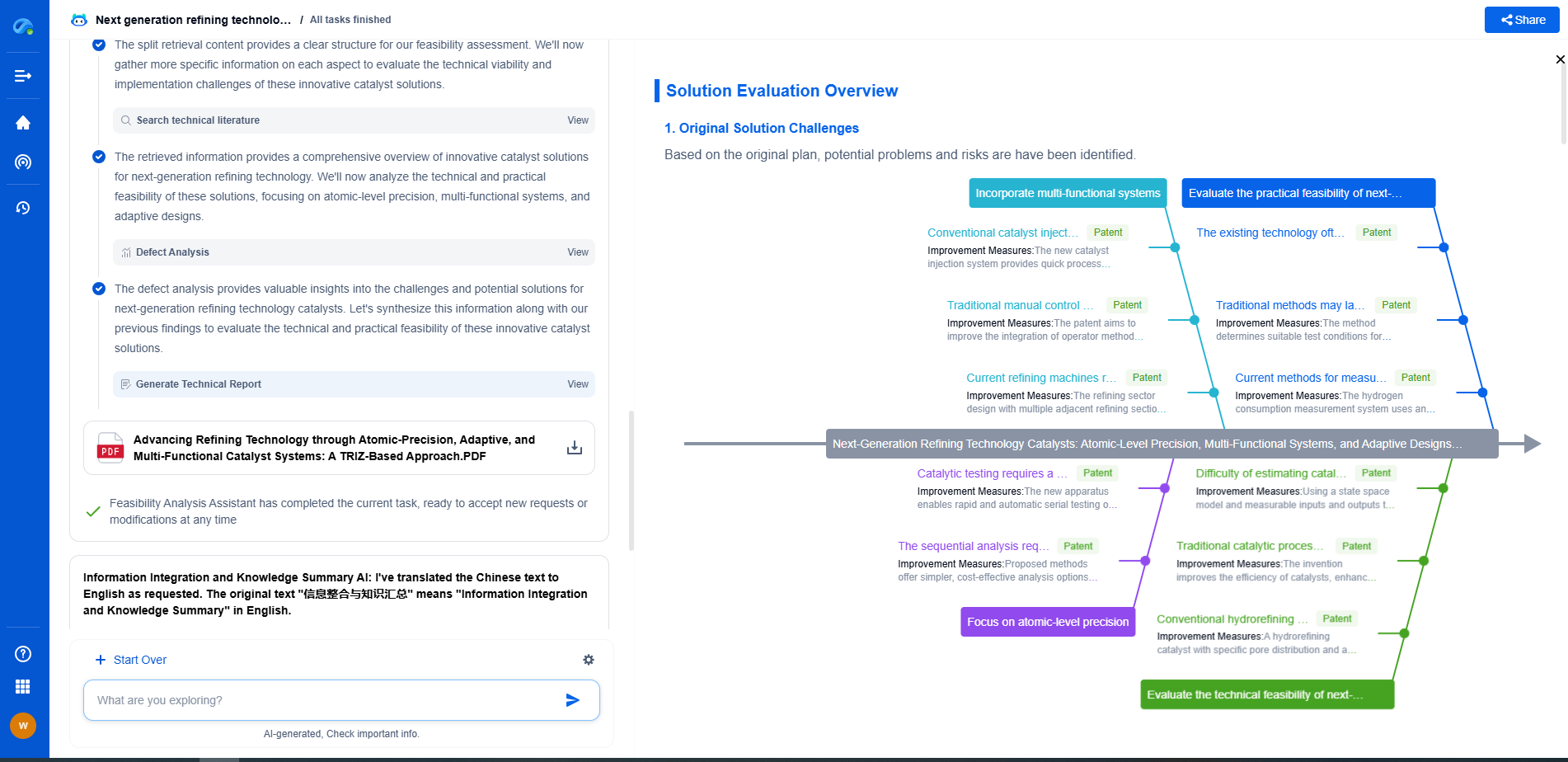How Automotive Engineers Use Modal Parameters for NVH Optimization
JUL 16, 2025 |
Noise, Vibration, and Harshness (NVH) is a critical aspect of automotive engineering that directly impacts the driving experience. NVH refers to the study and control of sound and vibration characteristics in vehicles. For automotive engineers, optimizing NVH is crucial for enhancing passenger comfort and satisfaction, improving vehicle performance, and ensuring compliance with regulatory standards. To achieve this, engineers rely on various techniques, with modal parameters playing a significant role in NVH optimization.
Understanding Modal Parameters
Modal parameters are fundamental characteristics that describe the dynamic behavior of a structure. They include natural frequencies, mode shapes, and damping ratios. These parameters are essential for understanding how a vehicle’s components respond to vibrations and how energy is distributed throughout the vehicle. By analyzing these parameters, engineers can identify and address potential NVH issues.
Natural Frequencies: These are specific frequencies at which a system tends to oscillate with greater amplitude. Identifying and managing natural frequencies help engineers avoid resonance, which can amplify noise and vibrations.
Mode Shapes: Mode shapes describe the deformation patterns of a structure at its natural frequencies. Understanding these patterns is vital for determining which parts of the vehicle contribute to NVH issues and how they interact.
Damping Ratios: Damping determines how quickly vibrations decay over time. By optimizing damping, engineers can reduce unwanted vibrations and noise, leading to a smoother and quieter ride.
Modal Analysis Techniques
Modal analysis is a process used to determine the modal parameters of a vehicle’s components. This process involves a combination of experimental and computational methods to study how different parts of the vehicle respond to dynamic forces.
Experimental Modal Analysis: This technique involves physical testing of vehicle components or the entire vehicle to measure their dynamic response. Using specialized equipment like accelerometers and shakers, engineers can excite the structure and capture its response to identify modal parameters. This data is crucial for validating computational models and fine-tuning NVH solutions.
Finite Element Analysis (FEA): FEA is a powerful computational tool that allows engineers to simulate and analyze the dynamic behavior of vehicle components. By creating detailed virtual models, engineers can predict how changes in design or materials impact NVH performance. FEA helps in identifying potential NVH issues early in the design process, reducing the need for costly physical prototypes.
Application of Modal Parameters in NVH Optimization
Once modal parameters are identified, engineers can apply various strategies to optimize NVH characteristics.
Design Modifications: By understanding how different components interact dynamically, engineers can make informed design changes to reduce noise and vibration. This might involve altering the geometry, materials, or assembly methods of specific parts to improve their dynamic response.
Tuning of Damping Materials: Selecting and optimizing damping materials is another important aspect of NVH optimization. Damping treatments, such as constrained layer damping or free layer damping, can be strategically applied to critical areas to absorb and dissipate vibrational energy.
Isolation and Decoupling: Engineers can use isolation and decoupling techniques to minimize the transmission of vibrations from one part of the vehicle to another. This involves designing mounts and bushings that absorb vibrations, preventing them from reaching the passenger cabin.
Benefits of Modal Parameter Optimization
The effective use of modal parameters in NVH optimization offers numerous benefits:
Enhanced Comfort: By reducing noise and vibrations, engineers create a more comfortable and enjoyable driving experience for passengers.
Improved Durability: Lower vibration levels reduce the stress on vehicle components, increasing their lifespan and reliability.
Regulatory Compliance: Meeting NVH standards is essential for legal compliance and market competitiveness. Optimizing NVH helps manufacturers meet these requirements.
Increased Customer Satisfaction: A quieter and smoother ride positively influences customer perceptions and can lead to increased brand loyalty.
Conclusion
In the competitive automotive industry, optimizing NVH is a key differentiator that can significantly enhance a vehicle's appeal. By leveraging modal parameters, engineers gain valuable insights into the dynamic behavior of vehicles, allowing them to design and implement effective solutions for noise and vibration issues. As technology advances, the integration of advanced modal analysis techniques will continue to play a crucial role in driving innovation and excellence in NVH optimization.
In the world of vibration damping, structural health monitoring, and acoustic noise suppression, staying ahead requires more than intuition—it demands constant awareness of material innovations, sensor architectures, and IP trends across mechanical, automotive, aerospace, and building acoustics.
Patsnap Eureka, our intelligent AI assistant built for R&D professionals in high-tech sectors, empowers you with real-time expert-level analysis, technology roadmap exploration, and strategic mapping of core patents—all within a seamless, user-friendly interface.
⚙️ Bring Eureka into your vibration intelligence workflow—and reduce guesswork in your R&D pipeline. Start your free experience today.
- R&D
- Intellectual Property
- Life Sciences
- Materials
- Tech Scout
- Unparalleled Data Quality
- Higher Quality Content
- 60% Fewer Hallucinations
Browse by: Latest US Patents, China's latest patents, Technical Efficacy Thesaurus, Application Domain, Technology Topic, Popular Technical Reports.
© 2025 PatSnap. All rights reserved.Legal|Privacy policy|Modern Slavery Act Transparency Statement|Sitemap|About US| Contact US: help@patsnap.com

